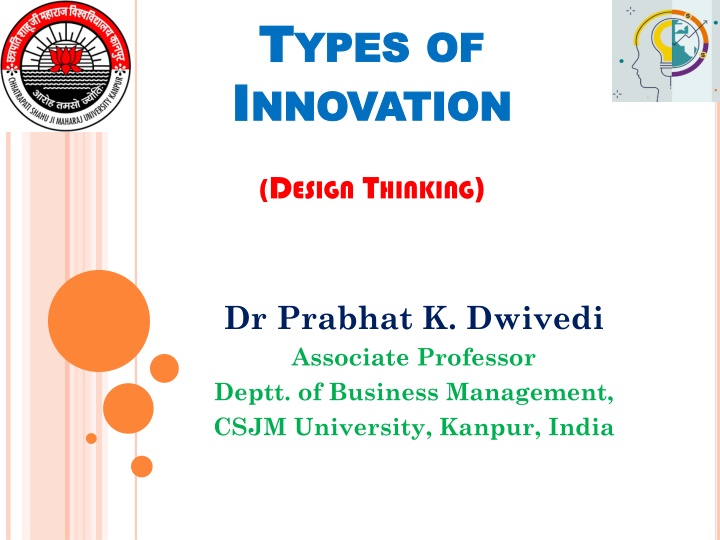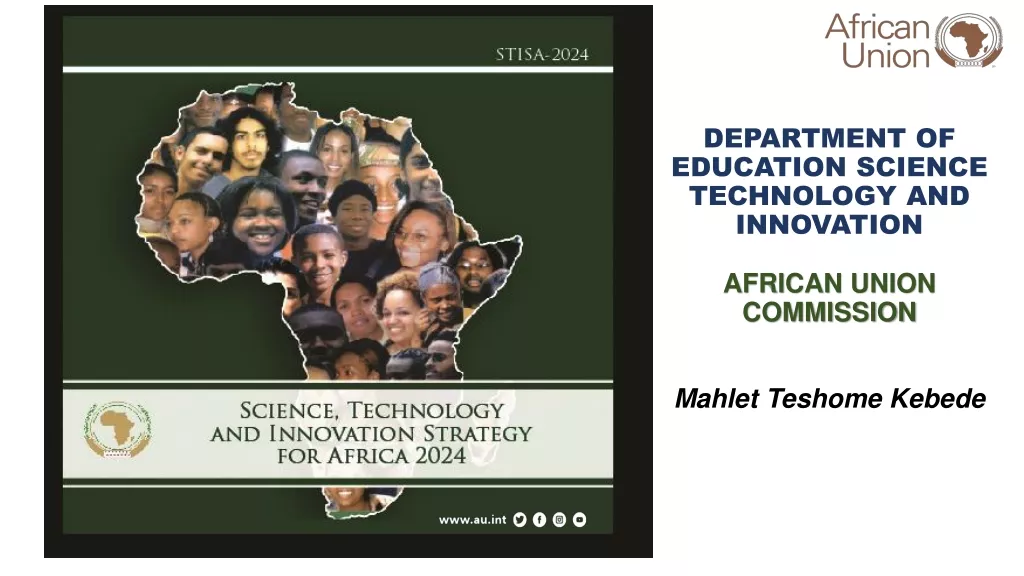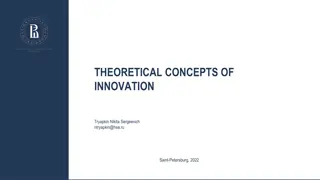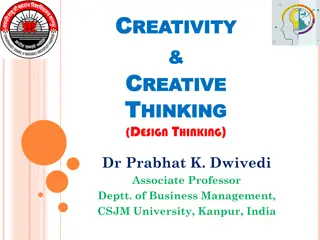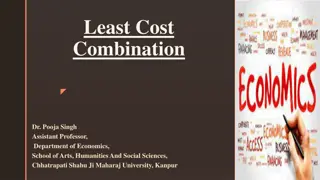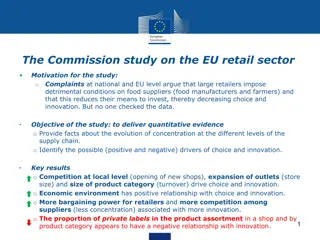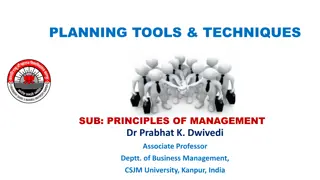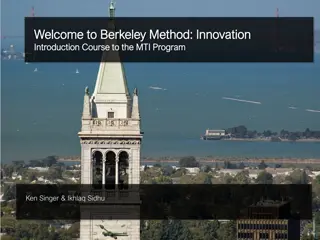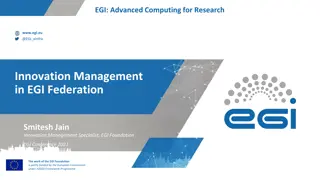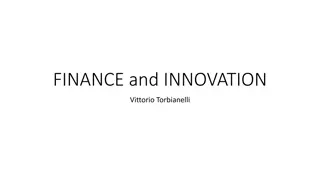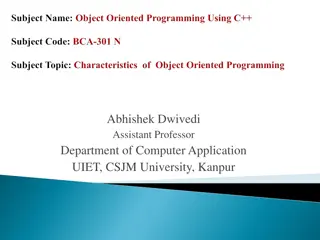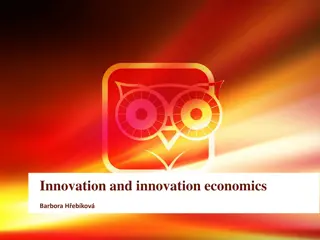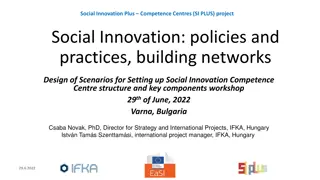Types of Innovation and Practical Application by Dr. Prabhat K. Dwivedi
Innovation, as outlined by Dr. Prabhat K. Dwivedi, encompasses various types such as breakthrough and disruptive innovation. It involves implementing new ideas to create value and improve existing products and services. The practical application of innovative ideas results in new offerings, processes, and models, aiming to enhance or disrupt traditional applications.
Download Presentation

Please find below an Image/Link to download the presentation.
The content on the website is provided AS IS for your information and personal use only. It may not be sold, licensed, or shared on other websites without obtaining consent from the author.If you encounter any issues during the download, it is possible that the publisher has removed the file from their server.
You are allowed to download the files provided on this website for personal or commercial use, subject to the condition that they are used lawfully. All files are the property of their respective owners.
The content on the website is provided AS IS for your information and personal use only. It may not be sold, licensed, or shared on other websites without obtaining consent from the author.
E N D
Presentation Transcript
T TYPES YPES OF I INNOVATION NNOVATION OF (DESIGN THINKING) Dr Prabhat K. Dwivedi Associate Professor Deptt. of Business Management, CSJM University, Kanpur, India
INNOVATION Innovation entrepreneurs, the means by which they exploit change as an opportunity for a different business or a different service. "Innovation is the implementation or creation of something new that has realized value to others . Innovation is the specific function of entrepreneurship, whether in an existing business, a public service institution, or a new venture started by a lone individual in the family kitchen. It is the means by which the entrepreneur either creates new wealth- producing resources or endows existing resources with enhanced potential for creating wealth. is the specific tool of 2 Peter Drucker
WHATIS INNOVATION, IN PRACTICAL? Innovation is the practical application of ideas that result in different new types of new offerings, like products, processes, and models, intending improve or disrupt existing applications new solutions. services, business to or creating 3
INNOVATION Idea Implementation Impact 4
TYPESOF INNOVATION Albert Einstein once said: If I had 20 days to solve a problem, I would take 19 days to define it. Indeed, defining the problem is the most important step in solving it. The ability to define a problem is an important aspect in choosing the right strategy to solve it. Another aspect in choosing the right innovation strategy is the ability to define the domain and skills necessary to solve the problem. 5
BREAKTHROUGH INNOVATION This innovation is sometimes also called radical innovation, or revolutionary innovation. The matrix shows that the problem is generally well formulated, but that the road towards it, the skills, and domain are still somewhat unclear. Thomas Kuhn referred to this innovation as revolutionary because it creates a paradigm shift. For example, this happened when the structure of DNA was discovered, or when the chip was invented. 6
DISRUPTIVE INNOVATION It was Professor Clayton Christensen who introduced the concept of disruptive innovation. He realised that many organisations shape their innovation in the bestpossible way, by listening to customers and investing in research & development, even though in some situations these best practices could be deadly. He discovered that when the basis of competition changes (such as competitors or technological developments), organisations increasingly better at innovating products that people want less and less. become 7
BASIC RESEARCH At the bottom left of the Innovation Matrix is basic research. Groundbreaking innovations almost never arise out of the blue. More often than not, a major discovery precedes them. If Albert Einstein hadn t shared his vision and discoveries about black holes with the world, the astronomers with the Event Horizon Telescope might not have succeeded in photographing the phenomenon. Basic research is conducted by large companies that invest in R&D, universities, government institutions, non-profit research centres, and individuals. 8
SUSTAINING INNOVATION Sustaining innovation also refers to incremental innovation. Most innovation is conducted because something needs to perform better than it is able to do now. The goal is improve and expand existing possibilities. As can be seen in the innovation matrix, problems are well defined and the road ahead is also clear. 9
INCREMENTAL INNOVATION Existing Technology, Existing Market One of the most common forms of innovation that we can observe. It uses existing technologies within an existing market. The goal is to improve an existing offering by adding new features, changes in the design, etc. Example The best Example for incremental innovation can be seen in the Smartphone market where the most innovation is only updating the hardware, improving the design, or adding some additional features/cameras/sensors, etc. 11
DISRUPTIVE INNOVATION New Technology, Existing Market Disruptive innovation is mostly associated with applying new technologies, processes, or disruptive business models to existing industries. Sometimes new technologies and business models seem, especially in the beginning, inferior to the existing solutions but after some iterations, they surpass the existing models and take over the market due to efficiency and/or efficacy advantages. Examples Amazon used Internet-Technologies to disrupt the existing industry for book-shops. They had the existing market for books but changed the way it was sold, delivered and experienced due to the use of disruptive technologies. Another example was the iPhone, where existing technologies in the market (Phones with buttons, keypads, etc.) were replaced with touch-interface-centered devices combined with intuitive user interfaces. 12
ARCHITECTURAL INNOVATION Existing Technology, New Market Architectural innovation is something we see with tech giants like Amazon, Google, and many more at the moment. They take their domain expertise, technology, and skills and apply them to a different market. This way they can open up new markets and expand their customer base. Examples Especially digital ecosystem Amazon and Alibaba use this innovation strategy to enter new markets. They use existing expertise in building apps, platforms, and their existing customer base to offer new services and products for different markets. A recent example for this: Amazon recently entered the medical care field. orchestrators like 13
RADICAL INNOVATION New Technology, New Market Even it is the stereotypical way most people see innovation; it is the rarest form of them all. Radical innovation involves the creation of technologies, services, and business models that open up entirely new markets. Example The best example of radical innovation was the invention of the airplane. This radical new technology opened up a new form of travel, invented an industry, and a whole new market. 14
SOURCES https://harappa.education/harappa-diaries/what-is- creative-thinking-and-its-importance https://www.toolshero.com/innovation/innovation- matrix/ https://morethandigital.info/en/innovation- definition-innovation-types-and-meaning/ https://www.chasegroup.com.au/how-to-successfully- drive-innovation-in-organisations https://www.forbes.com/sites/louiscolumbus/2020/ 06/28/the-most-innovative-companies-of-2020- according-to-bcg/?sh=26e5ed862af3 https://www.forbes.com/sites/gregsatell/2013/03/0 7/how-to-manage-innovation-2/?sh=4fd53fc4785a 15
